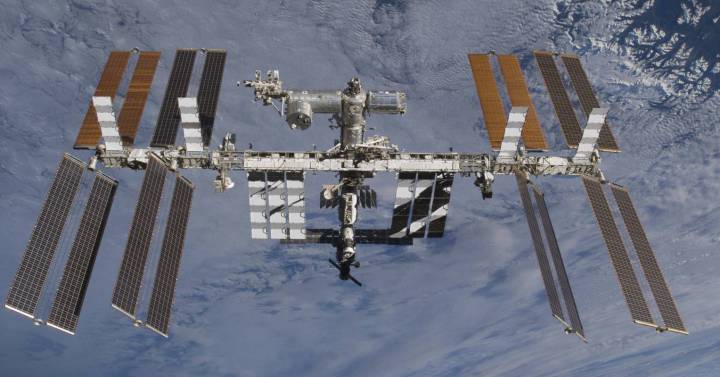Getting a toilet into space can be a momentous mission.
Even more so when it comes to transporting one valued at 23 million dollars (about 19 million euros) to the International Space Station (ISS), before its use in a future trip to the Moon.
After overcoming the bad weather conditions and the technical difficulties of the launch, a Northrop Grumann Cygnus freighter chartered by NASA took off on October 2 from Virginia (USA) to arrive three days later at the station with 3.6 tons ( 36,000 kilos) of experiments and supplies for the crew;
among them, the new microgravity toilet, known as the Universal Waste Management System (
UWMS
, for its acronym in English).
With the lack of gravity, the most basic human biological process can be a challenging and complicated task.
Until now, astronauts had to separate their activities in the bathroom.
To urinate, they used a hose that sucks up the liquid and, later, they made use of a small toilet in which, without actually sitting down, they deposited the feces in a bag that was then sucked up by the same device.
According to NASA, the new space toilet has an automated emptying system designed to suck up the waste that the body produces in an environment where gravity does not do its job.
This allows the simultaneous use of both toilets to save time for the crew.
In addition, it has a more ergonomic design that had been requested by astronauts.
It measures 71 cm in height, with a higher seat, and includes handles and footrest to prevent the user from floating away.
Melissa McKinley, UWMS project director at NASA, explains that the funnel design was completely reworked to better fit the female anatomy.
"This is particularly necessary when the crew members are trying to perform dual operations, when they defecate and urinate at the same time," he notes.
The urine is subsequently recycled, to recover up to 98% of water from this, therefore it is still handled from a separate funnel.
The new UWMS recovers 98% of the water it uses.
POT
The titanium toilet developed by NASA weighs about 45kg, is 40% lighter than the current one and 65% smaller, essential improvements to optimize the volume and energy consumed in the ISS.
In fact, the smaller footprint of the UWMS supports a possible increase in the number of crew members aboard the space station, as well as planning for future exploration missions.
The American Chris Cassidy and the Russian Ivan Vagner have been selected on the mission to check the suitability of the toilet, before they are finally incorporated into the Orion capsules that will take astronauts to the Moon in 2024.
Seeds, cosmetics and medicine
Lettuce and vegetables have already been grown on board the orbital laboratory.
But this time radish seeds have been sent to the Space Station to assess how light and soil conditions affect their growth in space.
The results are expected to optimize the plant growing process that the crew has developed, along with recording the nutritional value and flavor resulting in zero gravity.
Some Estée Lauder face cream has also been included in the Northrop Grumman Antares rocket charge.
The cosmetics brand has paid $ 128,000 (about 109,000 euros) to NASA to bring 10 containers of its skincare product that will be photographed by astronauts on the International Space Station, becoming the first beauty brand to go to the space.
In addition, it has sought to deepen the advances of cancer drugs from the space station.
With the research that tests drugs to treat leukemia we want to see which of those that have already demonstrated their efficiency in normal gravity, also give good results in microgravity.
For researchers, these could be good candidates for safer, more effective and more affordable drugs to treat leukemia and other cancers, potentially improving survival rates for thousands of people each year.
Finally, a new 360-degree camera has been shipped in the cargo that will be mounted on the Canadarm2 robotic arm to capture a spacewalk from start to finish, as well as images of the Earth and the exterior of the space station.

